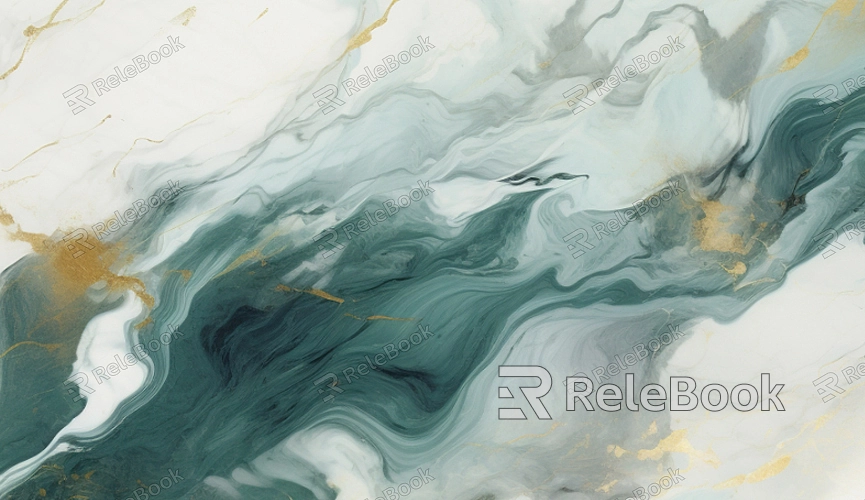What Causes Texture Blurring on 3D Models?

Understanding Texture Mapping
Before delving into the causes of texture blurring, it's important to understand what texture mapping is. Texture mapping involves applying a 2D image (the texture) to the surface of a 3D model. This process allows the 3D model to have detailed surface properties like color, patterns, and even complex effects like bump mapping, which simulates depth on the surface. The texture is wrapped around the model according to UV coordinates, which map the 2D texture to the 3D surface.
Causes of Texture Blurring
Several factors can lead to texture blurring on 3D models:
1. Low-Resolution Textures
One of the most common causes of texture blurring is the use of low-resolution textures. When a texture is stretched over a large surface area, its pixels become more visible, causing a blurry or pixelated effect. This is particularly noticeable when viewing the model up close or rendering it at a high resolution.
2. Incorrect UV Mapping
UV mapping errors can also cause texture blurring. If the UV map is not aligned correctly or if it stretches the texture too much in certain areas, the result will be a blurred or distorted appearance. This can occur when the UV map is scaled improperly or when the 3D model has complex geometry that is difficult to map accurately.
3. Mipmapping
Mipmapping is a technique used to improve rendering performance by using lower-resolution textures for objects that are far from the camera. While mipmapping helps reduce aliasing and improve performance, it can also cause texture blurring, especially if the lower resolution mipmap levels are used inappropriately or if the transition between mipmap levels is too abrupt.
4. Texture Filtering Methods
Texture filtering methods, such as bilinear, trilinear, and anisotropic filtering, play a significant role in how textures are rendered on 3D models. While these methods are designed to smooth out textures and reduce aliasing, they can sometimes lead to blurring, particularly when textures are viewed at oblique angles or when lower-quality filtering methods are used.
5. Texture Compression
To save memory and improve performance, textures are often compressed. However, compression can reduce the quality of the texture, leading to blurring. Some compression algorithms, such as DXT1, are more prone to causing noticeable texture artifacts, including blurring.
6. Camera Distance and Perspective
The distance of the camera from the 3D model and the camera's perspective can also affect how textures appear. When the camera is far away or at a steep angle relative to the model's surface, textures may appear blurry due to the reduced number of pixels used to represent the texture in the rendered image.

Solutions to Mitigate Texture Blurring
Now that we’ve identified the causes of texture blurring, let's explore some solutions:
1. Use High-Resolution Textures
To avoid blurring, use textures that have a higher resolution, especially for models that will be viewed up close. A high-resolution texture retains more detail and can be scaled without losing quality.
2. Optimize UV Mapping
Ensure that your UV mapping is optimized and free from distortions. Take the time to manually adjust UV maps to fit the texture properly, especially on complex models. Tools within 3D software allow you to check for stretching or other mapping errors that might lead to blurring.
3. Adjust Mipmapping Settings
If you're using mipmapping, consider tweaking the mipmap settings to find a balance between performance and quality. You may want to use higher resolution mipmap levels or implement a more gradual transition between mipmap levels to reduce blurring.
4. Use High-Quality Filtering Techniques
Switch to more advanced texture filtering techniques, such as anisotropic filtering, which is particularly effective at preserving texture detail when viewed at sharp angles. This can significantly reduce the blurring effect.
5. Choose the Right Compression Format
If you need to compress your textures, choose a compression format that offers a good balance between quality and file size. Formats like BC7 offer better quality compared to older formats like DXT1, reducing the likelihood of texture blurring.
6. Adjust Camera Settings
When rendering, consider the camera settings and the distance from the model. If textures appear blurry from a distance, you might need to adjust the level of detail settings or render the scene at a higher resolution.
Additional Considerations
1. Monitor Calibration
Sometimes, what appears as texture blurring might be a result of improper monitor calibration. Ensuring your monitor is properly calibrated can help you better assess the quality of your textures.
2. Software-Specific Settings
Different 3D software may have specific settings that influence how textures are rendered. Familiarize yourself with these settings and adjust them accordingly to minimize texture blurring.
FAQ
Can texture blurring be fixed after rendering?
It's challenging to fix texture blurring after rendering without losing some quality. It's best to address the issue during the texturing and rendering process.
Does texture blurring always mean a low-quality model?
Not necessarily. Texture blurring often results from technical settings rather than the model's intrinsic quality. Correcting these settings can resolve the blurring issue.
Are there automatic tools to fix UV mapping issues that cause blurring?
Many 3D software packages offer automatic UV mapping tools, but they may not always produce perfect results. Manual adjustments are often necessary to ensure optimal mapping.
What texture resolution is recommended to avoid blurring?
The recommended resolution depends on the model's intended use and how closely it will be viewed. However, 2048x2048 or higher is generally a good starting point for detailed models.
How does anisotropic filtering help reduce texture blurring?
A: Anisotropic filtering reduces blurring by improving texture clarity at sharp viewing angles, maintaining higher levels of detail compared to bilinear or trilinear filtering.

